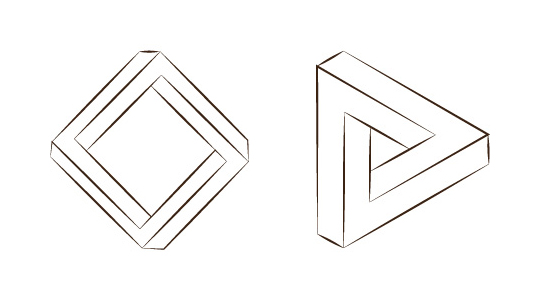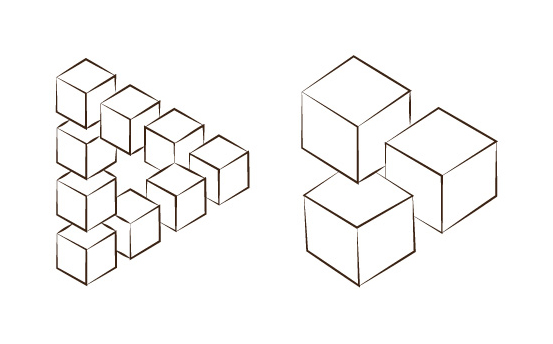Impossible Objects
Optical illusions are an interesting cognitive stumble that can be explained through gestalt theory – but a simple shorthand is to say that what we are seeing doesn’t match up with what we expect to see, and the illusion is the result of our brains try to “fix” the image.
There is a subset of optical illusions known as impossible objects, which I have been really drawn to lately. There is something simply delightful about a good paradox. This, for example, is a blivet, also known as a poiuyt, “the devil’s pitchfork” or “the devil’s tuning-fork”.

An impossible object (also known as an impossible figure or an undecidable figure) is a type of optical illusion consisting of a two-dimensional figure which is instantly and subconsciously interpreted by the visual system as representing a projection of a three-dimensional object although it is not geometrically possible for such an object to exist (at least not in the form interpreted by the visual system).
– wikipedia
Oscar Reutersvärd was a Swedish artist who invented a whole stack of these kinds of objects. He’s kind of a big deal but has sadly been overshadowed to some degree. Check out these triangle forms he drew using a series of cubes:
He was drawing these kinds of forms well before Lionel and Roger Penrose published their paper in the British Journal of Psychology, but these kinds of forms are generally known as a Penrose square and a Penrose triangle, respectively.

These kinds of objects have inspired many artists, most notably the Dutch artist, M.C. Escher. In this piece, Escher employs what is known as Penrose stairs.

M.C. Escher – Ascending and Descending
…but back to the blivet. It is interesting not only as an impossible object, but also etymologically. Its origin is military, and was coined in WW2. A blivet was originally defined as “ten pounds of shit in a five pound bag”.
A rather colourful description, no?



